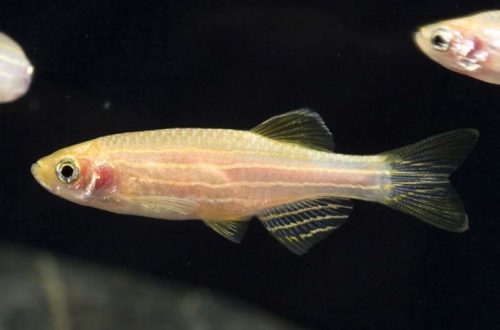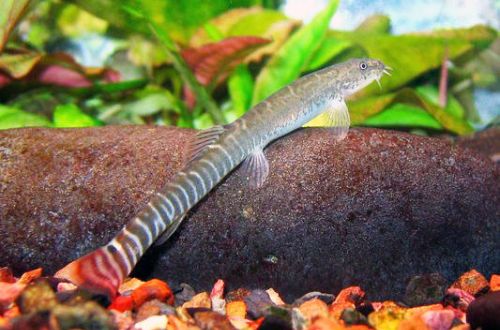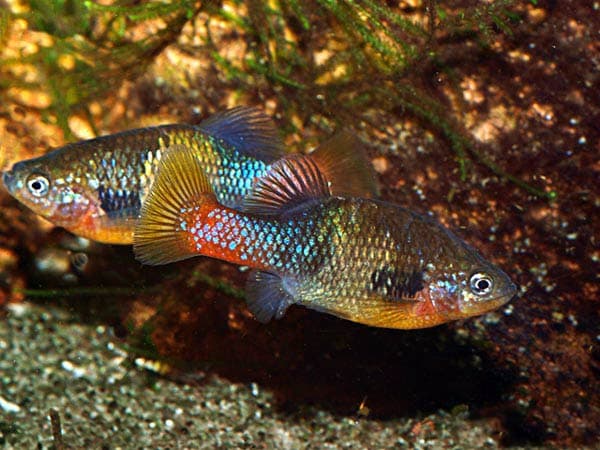
Xenotoka orange
Red-tailed Xenotoka or Orange Xenotoka, scientific name Xenotoca eiseni, belongs to the Goodeidae family. Bright hardy viviparous fish. She would make a great addition to the freshwater aquarium community were it not for her unpredictable behaviour.

Contents
Habitat
Occurs from the territory of Mexico from the plateau in the east of the country. It is found everywhere from transparent mountain streams to roadside ditches in the rainforest.
Brief information:
- The volume of the aquarium – from 50 liters.
- Temperature – 15-30°C
- Value pH — 4.0–8.0
- Water hardness – 10–25 dGH
- Substrate type – any dark
- Lighting – any
- Brackish water – no
- Water movement – little or no
- The size of the fish is 6–7 cm.
- Food – any food
- Temperament – conditionally peaceful
- Content – alone, in pairs or in a group
Description
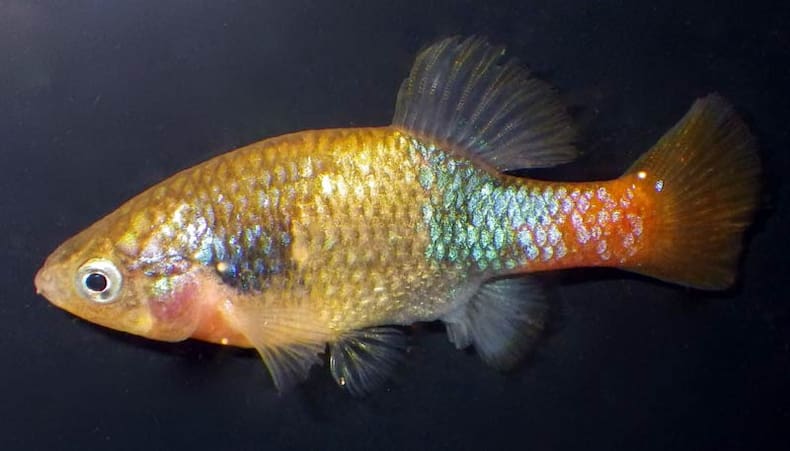
Adult males reach a length of about 6 cm, look brighter than females. Coloring combines yellow, red, orange colors with blue tints of scales. Females are larger (up to 7 cm), but the color is less variegated. During pregnancy, a dark mark is visible on the back of the abdomen.
Food
In nature, it feeds on small crustaceans, insect larvae and other invertebrates, as well as pieces of plants, algae. In the home aquarium, it will accept most popular dry, frozen and live foods. The daily diet may consist of flakes, pellets, combined with bloodworms, brine shrimp, daphnia, mosquito larvae, etc.
Maintenance and care, arrangement of the aquarium
Given the natural habitat of the red-tailed Xenotoka, it becomes clear that this fish is completely unpretentious and adapts perfectly to various conditions. Able to adapt to a wide range of temperatures and hydrochemical values. Aquarium maintenance is standard and similar to that of most other freshwater species. It is important to replace part of the water weekly with fresh water and regularly remove accumulated organic waste. In temperate latitudes during the warm summer months they can be found in open backyard ponds.
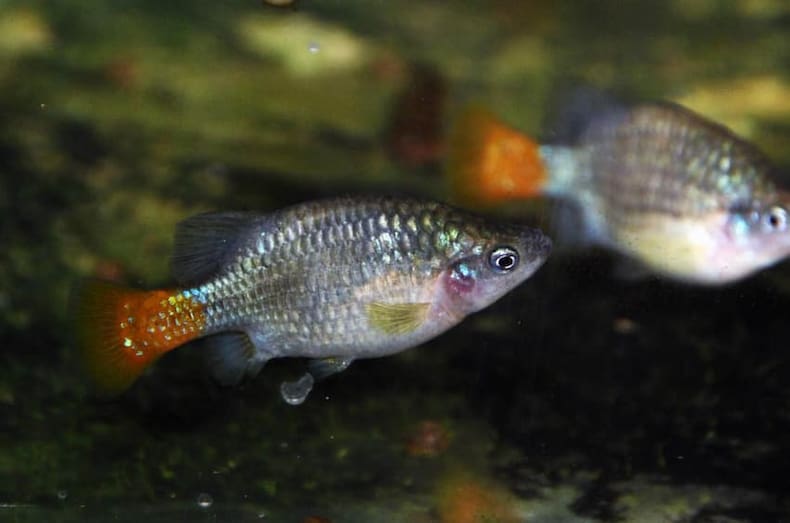
The design is arbitrary, selected at the discretion of the aquarist. However, an aquarium with lots of aquatic plants and dark substrate is preferred.
Behavior and Compatibility
They have an unpredictable disposition. One group may be completely harmless and get along with most fish, while the other will be aggressive towards tankmates. The risk group includes fish with long veil fins, which Xenotoka orange will (possibly) attack, damaging them. It is noted that Corydoras catfish are subjected to the greatest attacks. Before buying, you should carefully look at how this species reacts to other fish.
Breeding / breeding
Breeding is simple, it is enough to place several males and females in one tank. Pregnancy takes 7-8 weeks. The fry appear fully formed in the amount of 5–15 pieces in one brood. Parental instincts are not developed; for the safety of offspring, they should be transplanted into a separate aquarium in a timely manner. The fry are quite large and from birth can take the same food as adult fish.
Fish diseases
Most fish diseases are caused by prolonged exposure to unsuitable conditions. Xenotoka redtail is very hardy, if symptoms of the disease appear, then the situation in the aquarium is catastrophic and the problems will be visible to the naked eye. Normalization of the habitat is often enough for the body to cope with the disease, but in some cases, medication will be required. For more information on symptoms and treatments, see the Aquarium Fish Diseases section.



